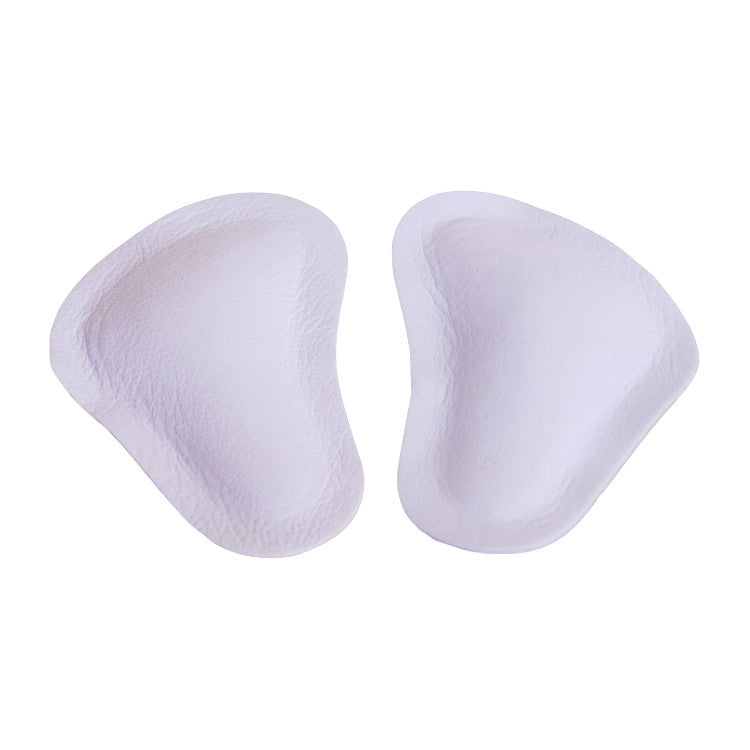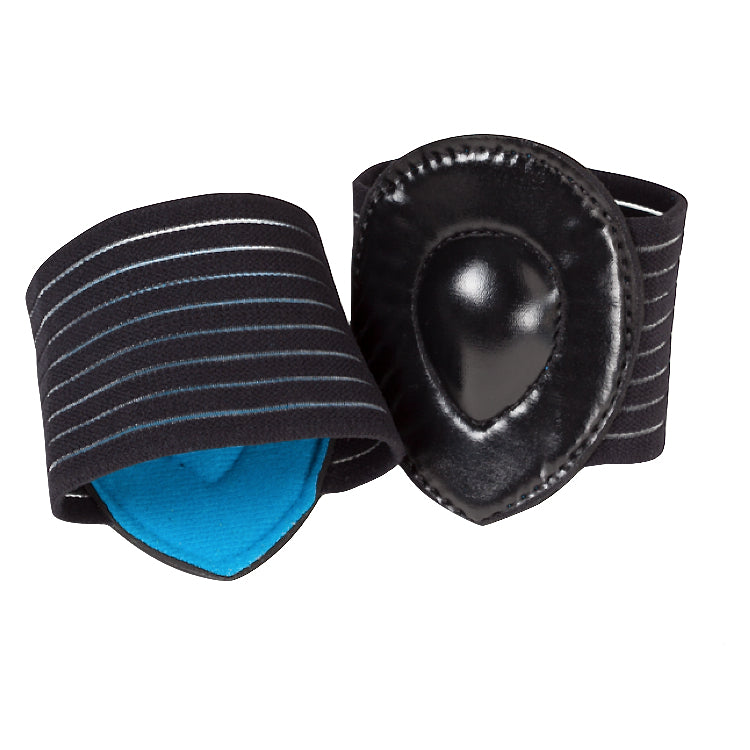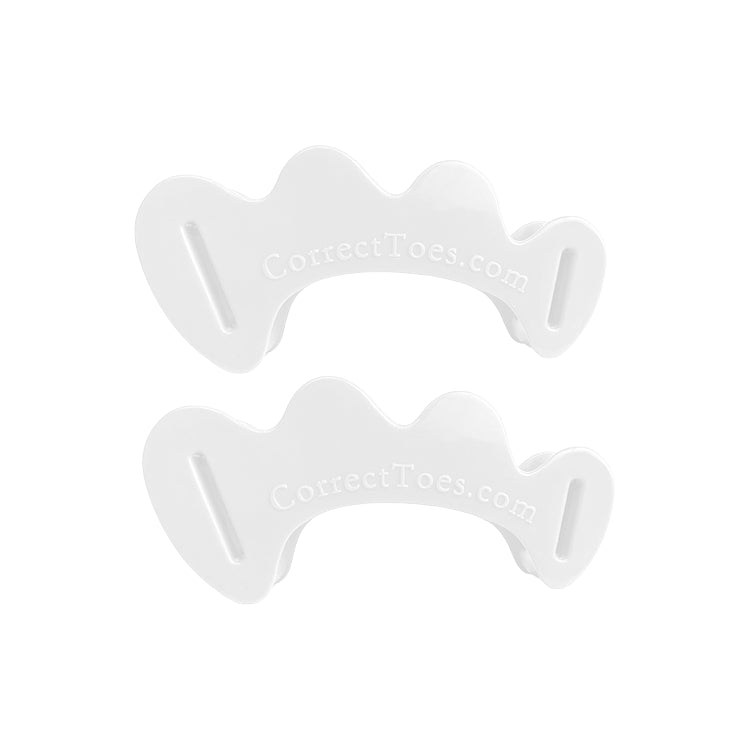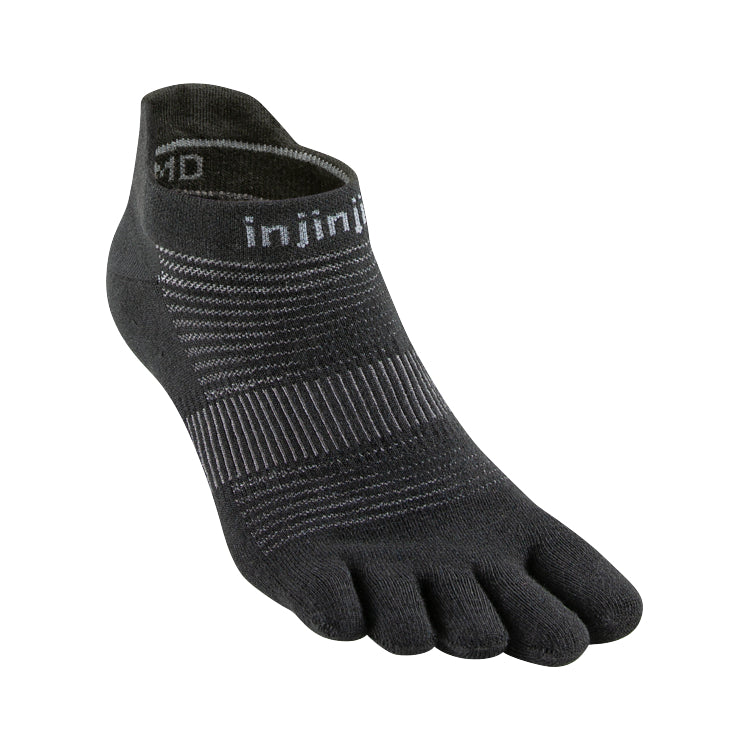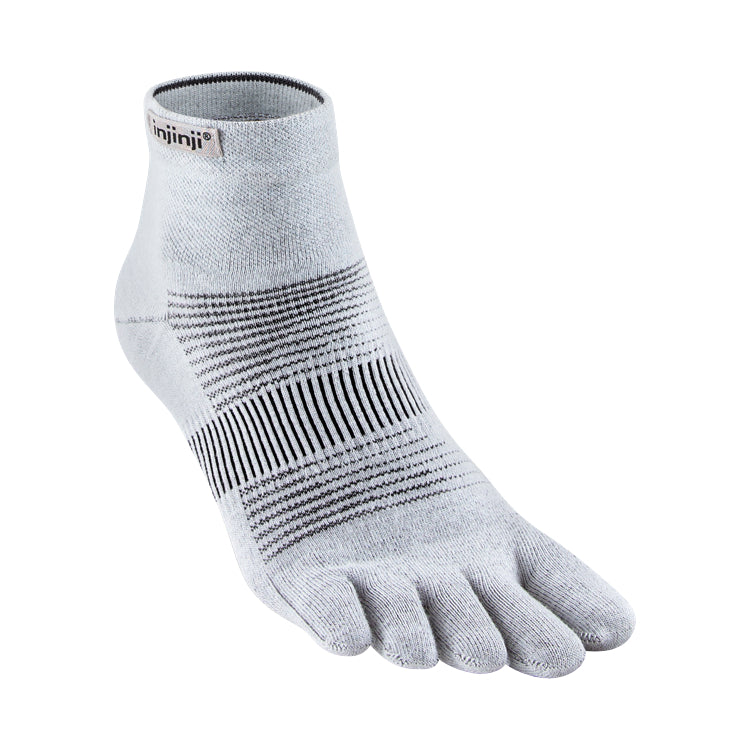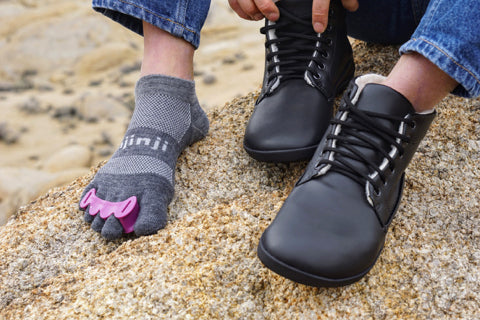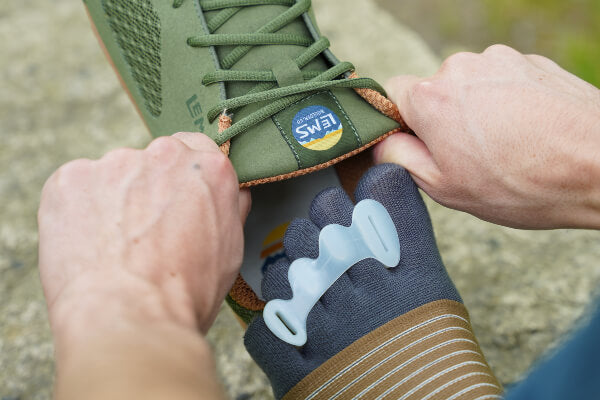
Metatarsal pads may be small and unobtrusive, but they are mighty when it comes to aiding the foot and addressing a variety of foot ills.
The forefoot fat pad—a natural structure in all feet—is intended to sit underneath the ball of the foot and cushion and cradle the metatarsal heads at the point where they contact the ground. Wearing conventional shoes (i.e., shoes with elevated heels, tapering toe boxes, toe spring, and rigid soles) contributes to crooked toe problems and a forward displacement of this fat pad, so that the pad is no longer underneath the metatarsal heads and can’t contribute to protecting them from impact forces.
Metatarsal pads encourage the return of the forefoot fat pad to a place that supports the metatarsal heads and the nearby nerves. Comfortable and lightweight, metatarsal pads gently push up on the area immediately behind the ball of the foot, which brings the toes back down toward the ground. This, in turn, can help straighten and realign the toes, especially when these soft and flexible pads are used in conjunction with men's or women's foot-healthy footwear, Correct Toes toe spacers, and Injinji toe socks. Getting the toes back on the ground helps with proper weight distribution, too, by spreading bodyweight over all the metatarsal heads and toes.
Metatarsal pads are also helpful in spreading the transverse foot arch (i.e., the arch behind the ball of the foot that runs across the width of the foot) to give the nerves and blood vessels running between the metatarsal heads a bit more room through which to pass on their way to the toes. Metatarsal pads are particularly useful in addressing capsulitis, sesamoiditis, and neuromas. They also work well in combination with Correct Toes toe spacers in addressing hammertoes and other types of crooked toes.
There are two main types of metatarsal pads: Stationary and mobile. Stationary metatarsal pads come in multiple sizes, have an adhesive backing, and are permanently fixed inside shoes, whereas mobile metatarsal pads come in one size, are worn on the feet, and can be used in all types of footwear. Both types of metatarsal pads function in the same way, and so which one you use is simply a matter of personal preference.

WANT TO IMPROVE YOUR FOOT HEALTH?
Let the team at Natural Footgear help you! Subscribe to our newsletter for the latest offers and helpful info, and sign up for our FREE email courses on various topics and foot health conditions.
Sign Up →
Want to Improve Your Foot Health?
We are here to help you every step of the way. Get our newsletter for the latest offers and helpful info, and sign up for our FREE email courses on various topics and conditions, including bunions, hammertoes, neuromas, plantar fasciosis, shin splints, ingrown toenails, and more.
Sign Up →
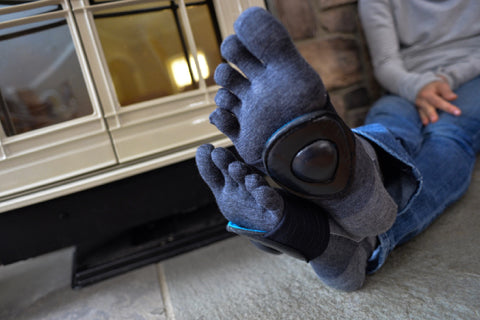 Two of the main metatarsal pad functions—restoring proper forefoot fat pad positioning and spreading out the transverse foot arch—are quite independent. In the case of the former, it's really the toe spring built into conventional footwear—and the associated toe flexor/extensor muscle imbalance it creates—that's responsible for shifting the fat pad to a position further out on the foot, closer to the ends of the toes. Metatarsal pads, which should be...
Read more
Two of the main metatarsal pad functions—restoring proper forefoot fat pad positioning and spreading out the transverse foot arch—are quite independent. In the case of the former, it's really the toe spring built into conventional footwear—and the associated toe flexor/extensor muscle imbalance it creates—that's responsible for shifting the fat pad to a position further out on the foot, closer to the ends of the toes. Metatarsal pads, which should be...
Read more



